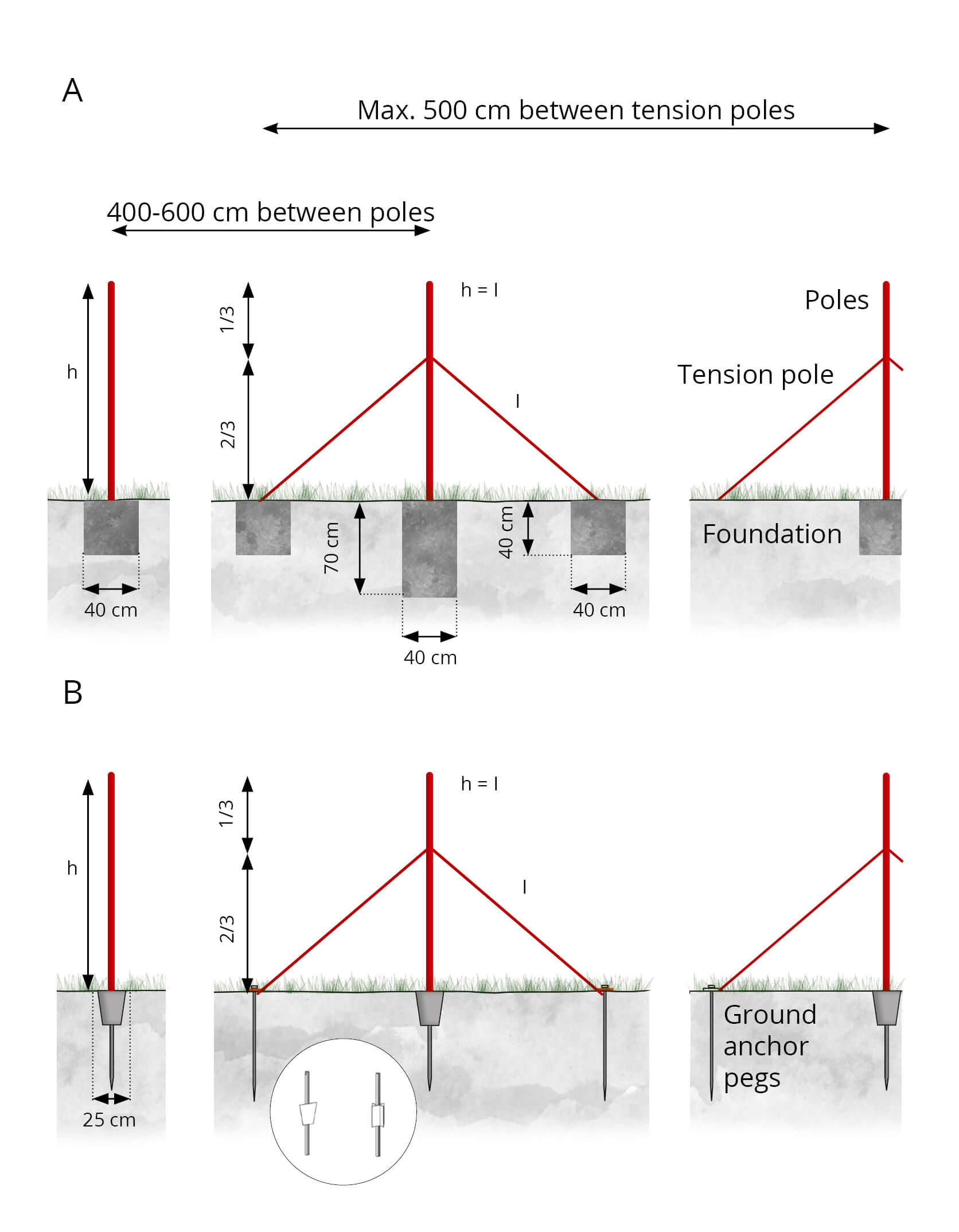Fences must be fixed onto sufficiently solid poles, which can be made of galvanized steel (an alloy of 95% Zinc and 5% Aluminium is suitable) rot-proof wood, or even concrete. Steel poles are generally T-shaped or hollow with a square, rectangular or tubular section. The specific characteristics of the poles must take into account both the solidity of the structure and, in certain cases, safety aspects to prevent the fence from adding to the severity of a traffic accident. The poles can be anchored in two ways (Figure 5.2.20):
- Grounded in a concrete block (depth of 40 to 70 cm depending on the nature of the ground)
- Driven directly into the ground by hammering (approximately 70 cm or more depending on the soil). Metal anchor pegs can also ensure the stability of the fencing while limiting the need for concrete blocks.
The distance between posts must be 4 to 6 m for large fauna except brown bear and wild boar, which require a lesser distance of 2 to 4 m. Terrain features may also dictate a shorter distance between posts.
Suitable anchorages for tension posts (maximum distance of 5 m between two tension posts) are required.
